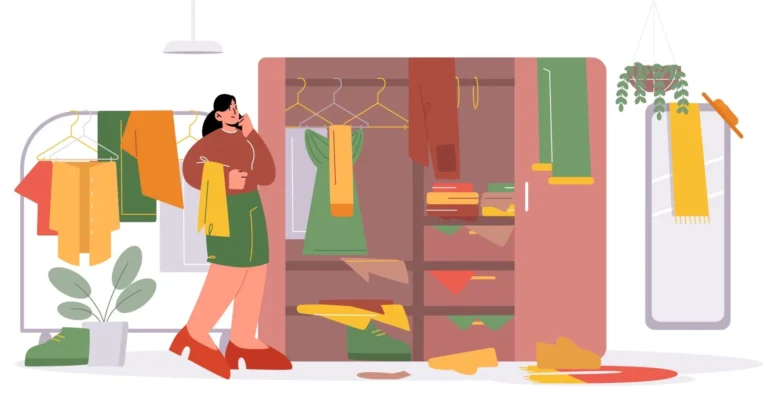Where does Clothing End Up? Modern Colonialism Disguised as a Donation
The world of fashion is dynamic, with trends changing at an alarming pace. As consumers, we often find ourselves navigating this ever-evolving landscape, leading to a considerable environmental impact. One aspect that demands our attention is the fate of our clothing once it leaves our closets. This article delves into the intricate journey of donated clothes and exposes the modern colonialism hidden behind the guise of charitable giving.
The Dark Side of Clothing Donations
Proliferation of fast fashion
Fast fashion has revolutionized the industry, providing affordable and trendy clothing at the cost of ethical production and quality. This section explores how the rise of fast fashion has contributed to the surge in clothing donations, perpetuating a cycle of overconsumption.
The illusion of charity
While donating clothes is often seen as a noble act, this heading uncovers the unsettling truth behind the façade. Many clothing donation systems lack transparency, leading to unintended consequences and perpetuating a form of modern colonialism.
Environmental repercussions
Donating clothes might seem like a responsible choice, but the environmental toll is severe. This part discusses the ecological impact, from overflowing landfills to the pollution caused by discarded textiles.
Unraveling the Journey of Donated Clothes
Sorting process in donation centers
Ever wondered what happens to your donated clothes after they leave the collection bin? This section sheds light on the sorting process in donation centers, providing insight into the fate of different items.
Overseas shipment and distribution
The journey doesn’t end locally. Explore how donated clothes travel across borders, creating a web of distribution that extends the global reach of modern colonialism.
Local impacts on recipient economies
While the intention behind sending clothes to those in need is commendable, it’s essential to understand the potential negative impacts on local economies. This part delves into the unintended consequences that can arise from seemingly charitable donations.
The Environmental Toll
Landfill overflow
Our throwaway culture contributes to overflowing landfills, and clothing is a significant contributor. This section emphasizes the need for sustainable disposal practices to mitigate the environmental crisis.
Textile waste pollution
Beyond landfills, discarded textiles pose a threat to our ecosystems. Learn about the consequences of textile waste pollution and why it’s crucial to address this issue.
Carbon footprint of transportation
The global distribution of donated clothes comes at a cost. Explore the carbon footprint left by the transportation of these items and its impact on climate change.
Alternative Solutions
Sustainable fashion initiatives
Is there a way to enjoy fashion without contributing to the problem? This section introduces sustainable fashion initiatives that focus on ethical production and responsible consumption.
Localized donation and recycling efforts
Rather than relying on global distribution, discover the benefits of localized donation and recycling programs that address the needs of specific communities.
Consumer awareness and responsible shopping
Empower yourself with knowledge on how to make informed and responsible choices as a consumer. This part emphasizes the importance of being mindful of the impact of your fashion choices.
The Need for Transparency
Lack of visibility in donation processes
One of the key issues is the lack of transparency in the donation process. Explore why understanding the journey of your donated clothes is essential for making a positive impact.
Advocating for accountability
This section calls for increased accountability within the fashion industry and donation systems, urging consumers to support initiatives that prioritize transparency and ethical practices.
Balancing charitable intentions with consequences
While the intention to help others is commendable, it’s vital to consider the potential consequences. This heading explores the delicate balance between charitable acts and unintended negative impacts.
Shifting Perspectives
Educating consumers
Knowledge is power. Uncover the importance of educating consumers about the complexities of the fashion industry and how their choices can drive positive change.
Encouraging mindful donations
Rather than discarding clothes impulsively, learn about the impact of thoughtful and mindful donations. This section offers insights into making a more significant difference with your contributions.
Rethinking the fashion industry
To truly address the issue at its core, a collective shift in the fashion industry is necessary. Explore the need for reimagining the industry’s practices to align with ethical and sustainable values.
The Power of Individual Choices
Supporting ethical brands
Explore how choosing ethical brands can contribute to a more sustainable and responsible fashion industry. This section encourages consumers to support businesses aligned with their values.
Thrifting and second-hand shopping
Discover the joy of thrifting and second-hand shopping as sustainable alternatives to fast fashion. This part emphasizes the positive environmental impact of embracing pre-loved clothing.
Reducing overall consumption
The ultimate solution lies in reducing overall consumption. Learn about the benefits of adopting a minimalist approach to fashion and how it can positively impact the environment.
What happens to clothes donated to Africa?
In a world where compassion drives charitable actions, it’s essential to scrutinize the unintended consequences of our well-intentioned deeds. This article delves into the reasons why we should reconsider the practice of donating clothes to Africa, shedding light on the complexities that often escape our well-meaning intentions.
The Unintended Consequences
The Proliferation of Fast Fashion
In the bid to offer help, we unintentionally contribute to the fast-fashion dilemma. Cheaply made clothes flood African markets, stifling local textile industries. This not only undermines economic growth but perpetuates dependency.
Environmental Impact
Discarded clothes, often unfit for local climates, become environmental hazards. Non-biodegradable materials add to pollution, adversely affecting the very communities we aim to assist.
Dignity and Empowerment
Empowering Local Economies Instead of fostering dependency, redirecting aid towards empowering local economies can break the cycle of poverty. Initiatives supporting entrepreneurship and sustainable industries make a lasting impact.
Preserving Cultural Identity
Clothing donations sometimes disregard cultural nuances. Empowering communities to produce and sell their attire ensures cultural preservation, fostering pride and self-identity.
Why We Should Stop Donating Clothes to Africa
A Call for Sustainable Solutions
Amidst the goodwill, there’s a pressing need for more sustainable solutions. Redirecting efforts towards education, healthcare, and skill development offers a more holistic approach to uplift communities.
The Power of Quality over Quantity
Prioritizing quality over quantity ensures that donated items serve their purpose effectively. A thoughtful approach to aid guarantees that every contribution makes a meaningful impact.
While the intention behind donating clothes to Africa is noble, the unintended consequences cannot be ignored. It’s crucial to reassess our approach, focusing on sustainable solutions that empower rather than create dependency. By doing so, we contribute to a more equitable and thriving global community.
Conclusion
In this journey through the life cycle of donated clothing, we’ve uncovered the hidden challenges and impacts that often escape our notice. It’s crucial to recognize the broader consequences of our choices and work collectively toward a more sustainable and responsible future.
FAQs
Can I donate any type of clothing?
Absolutely, but being mindful of the quality and condition ensures that your donation has a positive impact.
How can I support sustainable fashion?
Look for brands that prioritize ethical production, use sustainable materials, and have transparent supply chains.
What happens to clothes that aren’t suitable for donation?
Exploring local recycling options or repurposing items can be environmentally friendly alternatives.
Why is transparency crucial in the fashion industry?
Transparency ensures that consumers can make informed choices and hold brands accountable for their practices.
How can I reduce my carbon footprint in the fashion industry?
Opt for second-hand shopping, support eco-friendly brands, and embrace a more minimalist approach to fashion.







